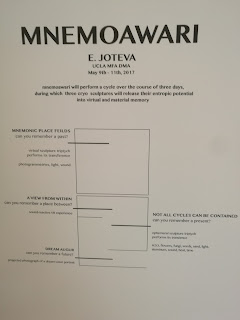Week 9 - Space + Art
In this week ’ s material the idea that I think the most interesting is the Cosmic Dancer . Created by Arthur Woods, the Cosmic Dancer is a 3-D sculpture with painting on its surface, and was launched into the space on the Russian Mir space station in 1993. Astronauts Alexander Polischuk and Gennadi Manakov spent some time with the sculpture, and become the only two human beings who had a chance to view it in space. Under zero gravity in the outer space the sculpture was allowed to float and spin freely, which makes it observable from every angle. The idea of a sculpture without a resting point or given angle for observation is quite stunning, in that it challenges the ordinary procedure of creating a sculpture while determining how the sculpture is to be perceived at the same time. The surface of the sculpture is painted in a way that the color and lines mimics the motion of subatomic particles, thus making the sculpture a metaphor of recent discoveries in phy...

